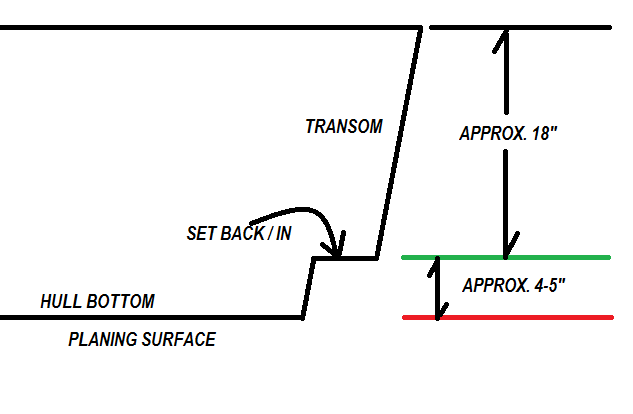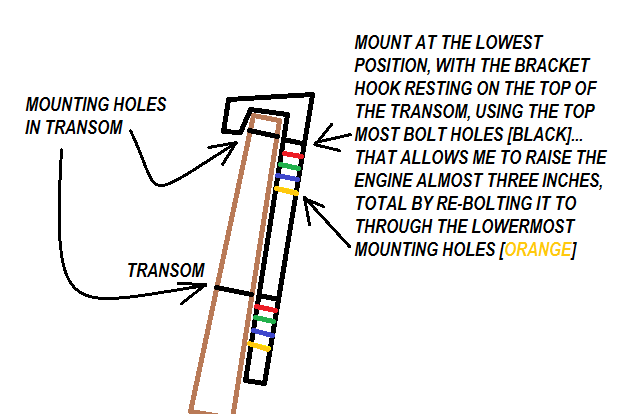GT1000000
Rear Admiral
- Joined
- Jul 13, 2011
- Messages
- 4,916
Hello Iboats,
Been here a bit but this is my first post in this section of the forum...
Decided to post this question here to try and get few different points of view...
Got a question as to where would be the best location for the cavitation plate of my outboard in relation to the particular design of the rear end of my hull...
OK, still not quite to this point yet, but soon...
I understand the cavitation plate of the outboard motor is usually in line with the bottom of the hull...
On my tub, the transom is built with a kick out or set back as illustrated below...
Which of the two lines, RED or GREEN would be the correct height placement for the cav plate on my set up...?

I have already received a couple of responses in my usual hang out at the restoration forum...
The basic consensus is that I will have to experiment to get the best placement...
I understand there is some adjustment available from the mounting bracket of my O/B and that I could also spend boo-koo bucks and install a jack plate...
My thing is, I would sure like, if possible, to eliminate both of the above and stick this thing in the right place, the first time...
Is that even possible or am I stuck with the trial and error method?
Thanks!
GT1M
Been here a bit but this is my first post in this section of the forum...
Decided to post this question here to try and get few different points of view...
Got a question as to where would be the best location for the cavitation plate of my outboard in relation to the particular design of the rear end of my hull...
OK, still not quite to this point yet, but soon...
I understand the cavitation plate of the outboard motor is usually in line with the bottom of the hull...
On my tub, the transom is built with a kick out or set back as illustrated below...
Which of the two lines, RED or GREEN would be the correct height placement for the cav plate on my set up...?

I have already received a couple of responses in my usual hang out at the restoration forum...
The basic consensus is that I will have to experiment to get the best placement...
I understand there is some adjustment available from the mounting bracket of my O/B and that I could also spend boo-koo bucks and install a jack plate...
My thing is, I would sure like, if possible, to eliminate both of the above and stick this thing in the right place, the first time...
Is that even possible or am I stuck with the trial and error method?
Thanks!
GT1M




















